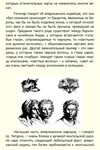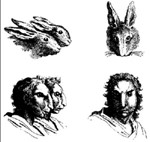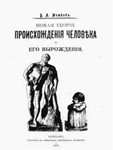Human Origins
Content: text (55 symbols)
Uploaded: 19.12.2018
Positive responses: 0
Negative responses: 0
Sold: 3
Refunds: 0
Seller: Protohistory
$0.55
In the history of any country or nation there were many different oracles that tried to predict how events would develop, to predict the fate of people. In most cases, their names have already been forgotten, since the predictions made by them have not come true. Mistakes touched even the famous and well-known Nostradamus.
However, as early as the beginning of the 20th century, the greatest and widely known seer who managed to see the future of his country lived in Russia. And, importantly, history confirmed the accuracy of the predictions of this person.
The name of the soothsayer Valentin Aleksandrovich Moshkov. He was a general and full member of the Russian Geographical Society, as well as coordinator of the Society of Archeology, History and Ethnography at Kazan University. And, although his name is not in modern encyclopedic dictionaries, he left behind a vast creative legacy.
In the first place is the study Moshkov, which was published in the years 1907-1910 of the last century. It was called “The New Theory of Human Origin and Degeneration” and was compiled using data from geology, ethnography, zoology, statistics, history and archeology. This work has become a real “book of the fate” of our Motherland, because in it the researcher predicts the course of Russian history up to 2062.
So, based on the materials used, we can say that in their forecasts Moshkov relies not on ephemeral signs, but on rather serious scientific facts. His theory is the assumption that in historical development all nations and states, without exception, continuously make a series of turns. The author described these revolutions as historical cycles. Each cycle of any country lasts exactly four hundred years. The author, in his studies, says that every four hundred years of its existence, nations return to the same thing they began with.
These four centuries of the whole cycle were named: gold, silver, copper and iron. The whole cycle is still divided into two equal parts, each of which accounts for two hundred years. The first part is considered ascending, and the second - descending.
However, as early as the beginning of the 20th century, the greatest and widely known seer who managed to see the future of his country lived in Russia. And, importantly, history confirmed the accuracy of the predictions of this person.
The name of the soothsayer Valentin Aleksandrovich Moshkov. He was a general and full member of the Russian Geographical Society, as well as coordinator of the Society of Archeology, History and Ethnography at Kazan University. And, although his name is not in modern encyclopedic dictionaries, he left behind a vast creative legacy.
In the first place is the study Moshkov, which was published in the years 1907-1910 of the last century. It was called “The New Theory of Human Origin and Degeneration” and was compiled using data from geology, ethnography, zoology, statistics, history and archeology. This work has become a real “book of the fate” of our Motherland, because in it the researcher predicts the course of Russian history up to 2062.
So, based on the materials used, we can say that in their forecasts Moshkov relies not on ephemeral signs, but on rather serious scientific facts. His theory is the assumption that in historical development all nations and states, without exception, continuously make a series of turns. The author described these revolutions as historical cycles. Each cycle of any country lasts exactly four hundred years. The author, in his studies, says that every four hundred years of its existence, nations return to the same thing they began with.
These four centuries of the whole cycle were named: gold, silver, copper and iron. The whole cycle is still divided into two equal parts, each of which accounts for two hundred years. The first part is considered ascending, and the second - descending.





